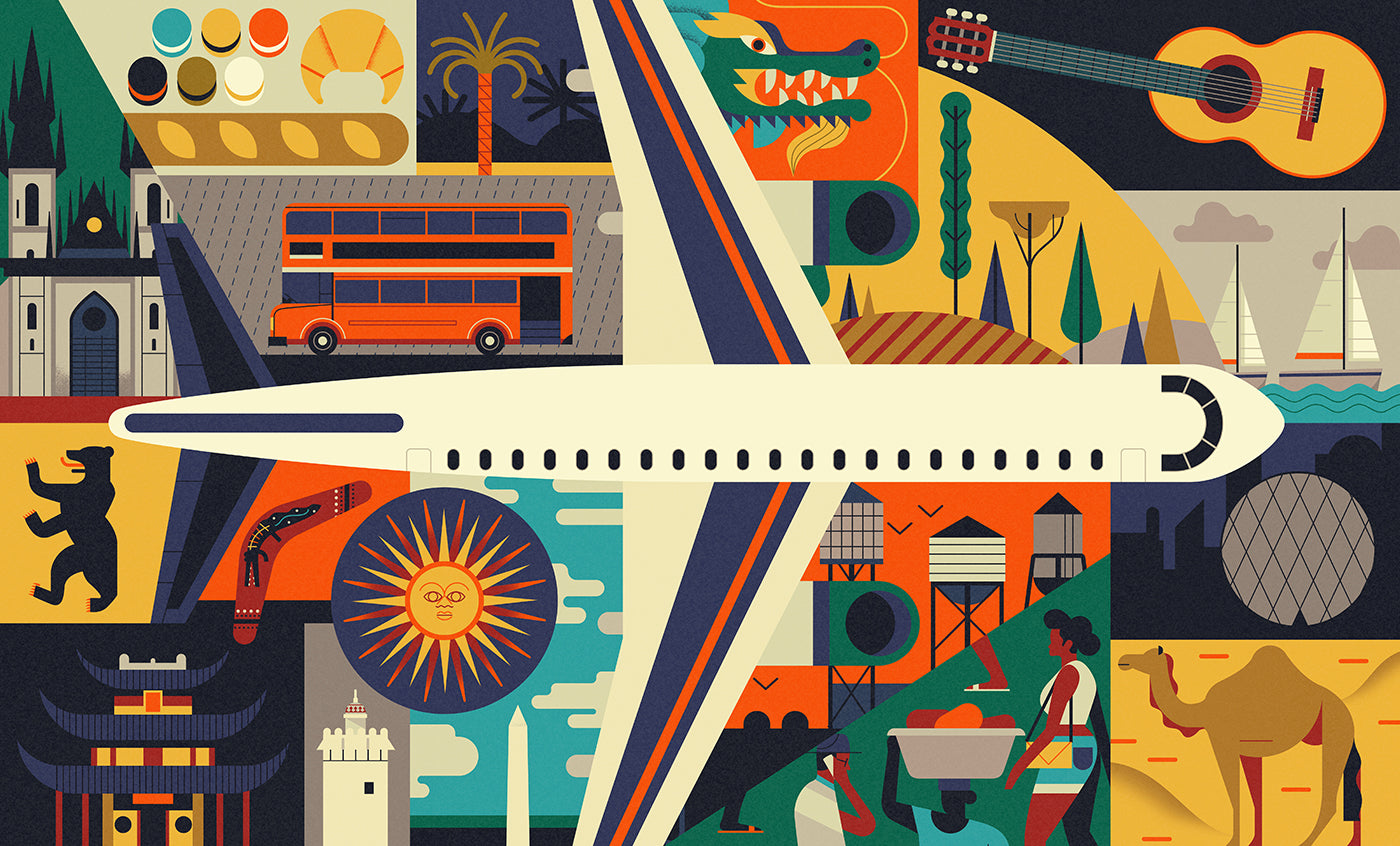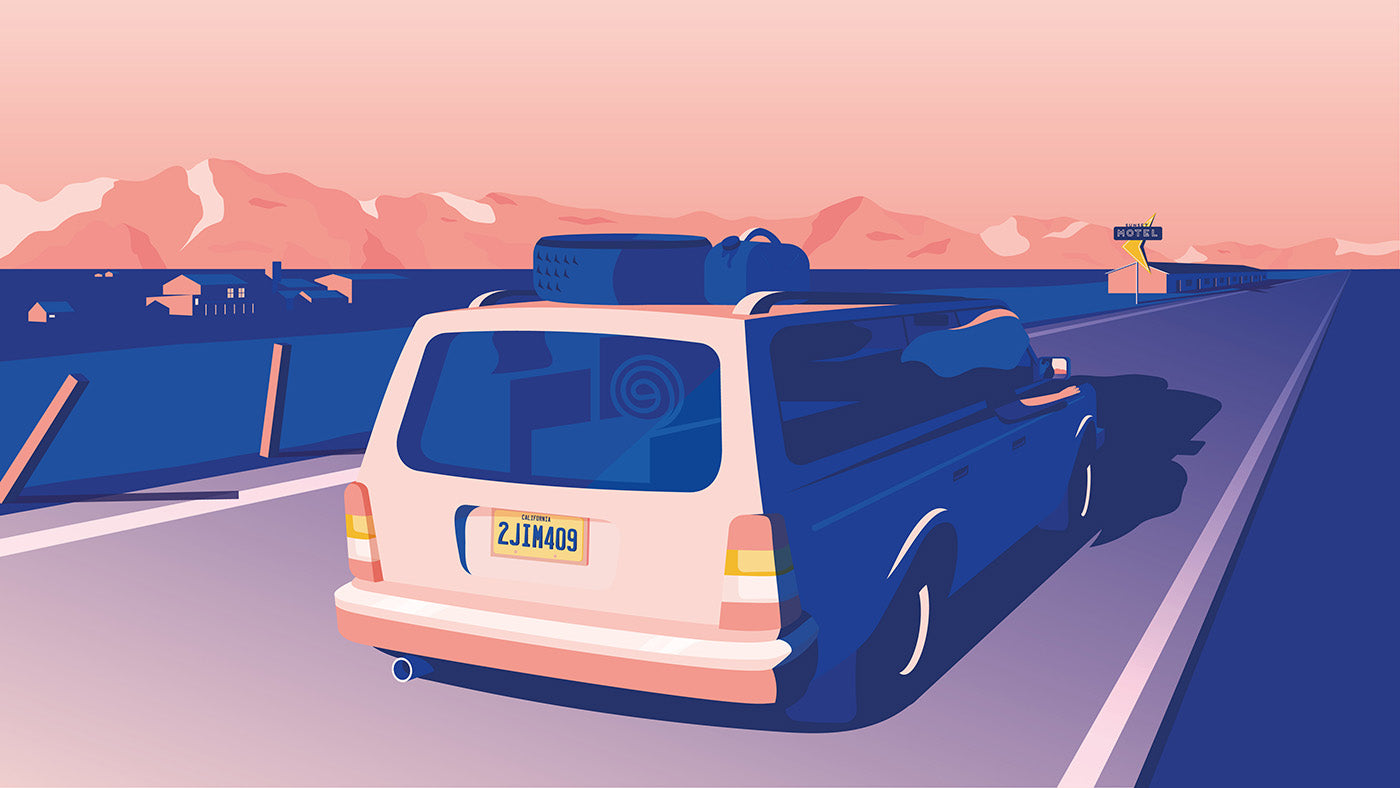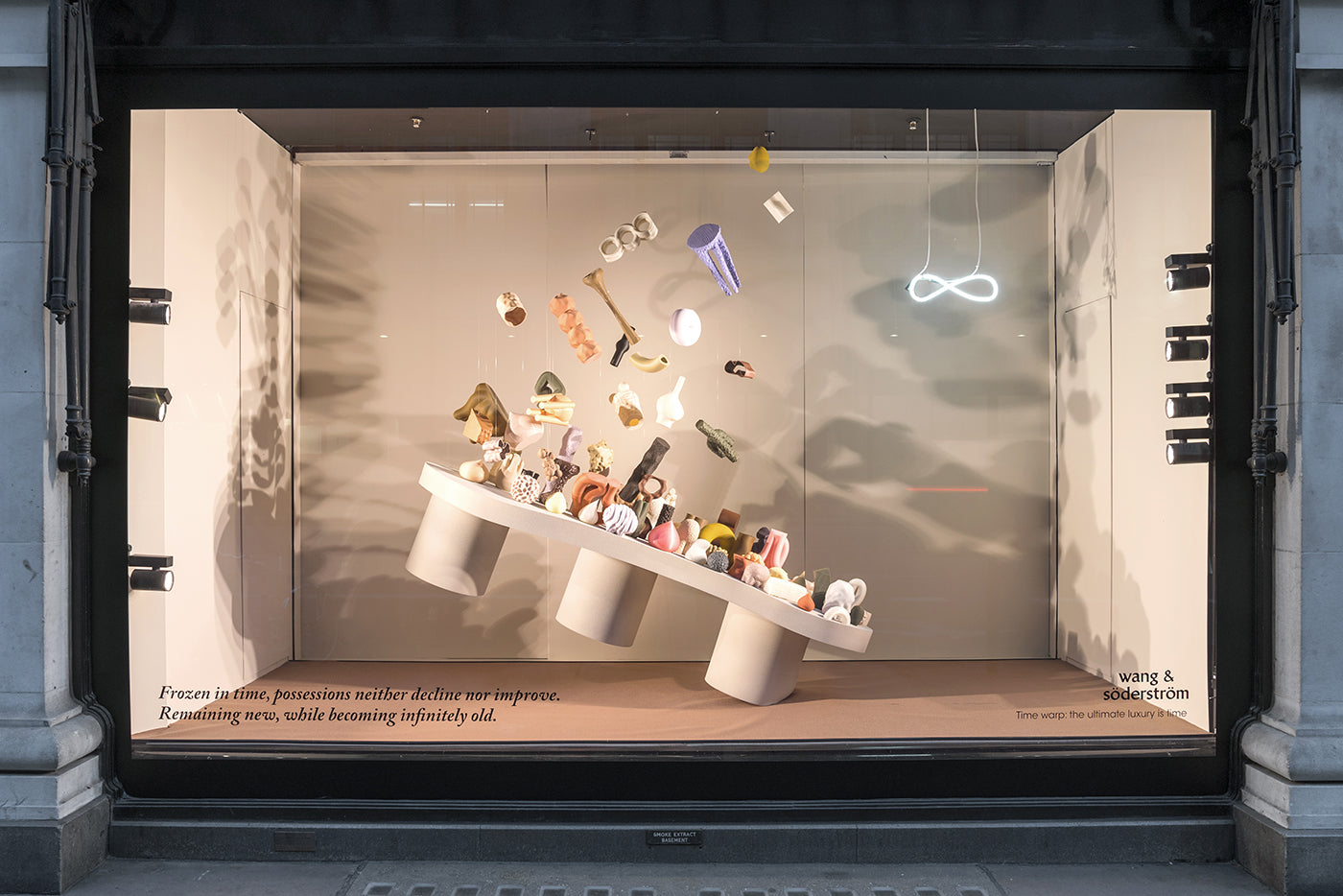
An Exploration Into Digital And Physical Design With Wang & Söderström
Dreamy seascapes, hyperreal realities, and object art from an exciting Scandinavian duo
Made up of power couple Anny Wang, a spatial and furniture designer, and architect Tim Söderström, multidisciplinary design studio Wang & Söderström are creating sirene art that strives toward "mind tickling experiences." Benchmarked for their creations, they are becoming as one of the most compelling duos in digital and physical exploration design.
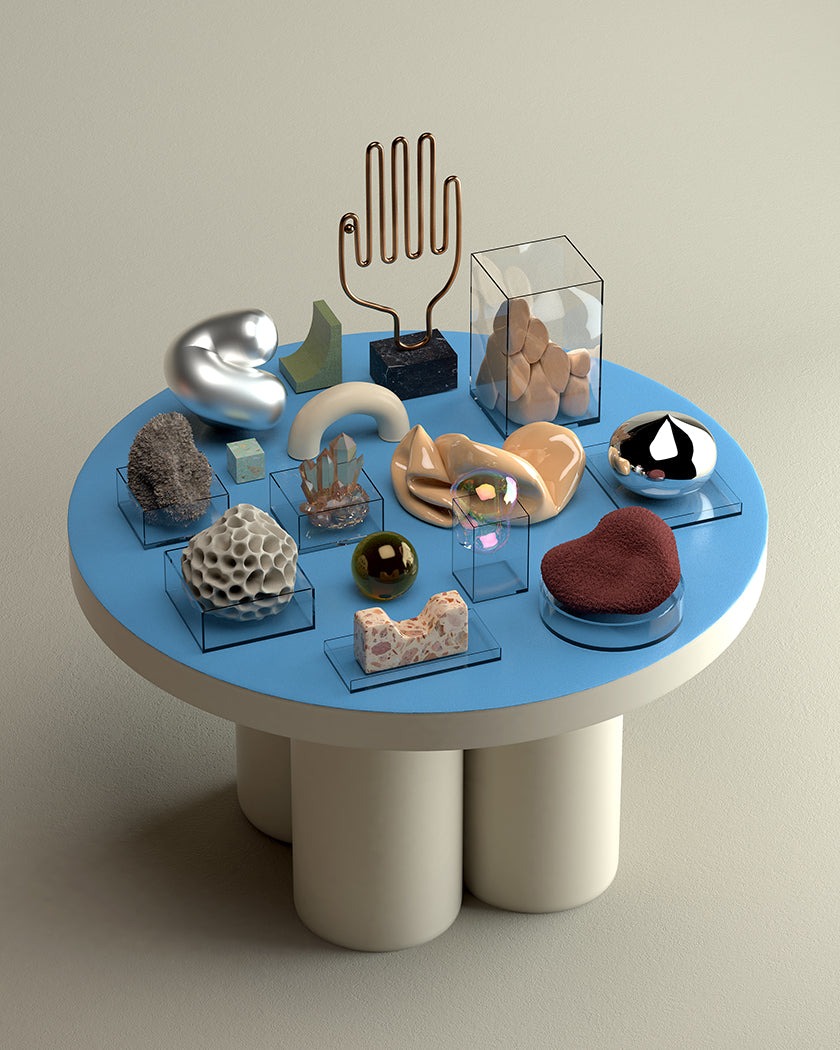
'Table Of Contents' is a series of printed illustrations were the studio further experiment with our library of digitally modeled curiosities.
Currently based in Copenhagen, the pair were one of the highlights of Milan Design Week 2019 following their 'Tides' collaboration with Kwangho Lee, they also took over London Selfridges' famous store windows last year, plus have an arsenal of clients from the likes of Opening Ceremony, Adidas, The New York Times, and the Nobel Prize Organization to name a few. They thrive on creating sculptures, art, and objects that allow for unexpected experiences through materiality and technology.
Back then there was no YouTube full of tutorials so we had to figure out that quite complex software ourselves and in a way, we hardwired our brains to function in this landscape
Building a reputation through fusing the physical and digital realms together, Wang & Söderström look to push the boundaries of these fields. They are part of a roster of creatives that are shaping tomorrow's visual and spatial experiences. Ahead of debuting their first exhibition design and graphic identity for the Röhsska Museum in Gothenburg, we caught up with Anny to find out how they went from a couple to business partners and why the phenomenon of 'Synesthesia' is influencing their craft.
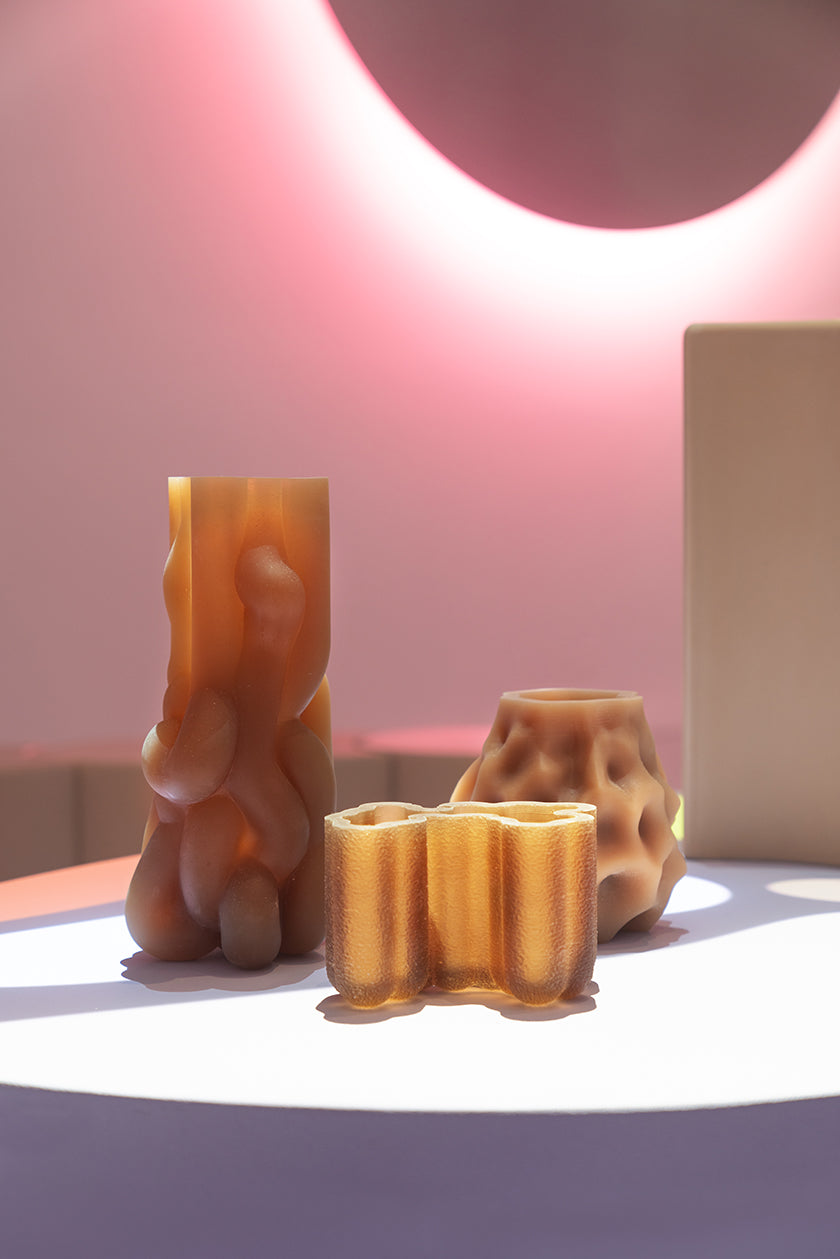
The ‘Tides’ collaboration with Kwangho Lee, shown at Ventura Centrale during Milan Design Week 9-14 April 2019.
Can you tell us a little bit about your early years and what a teenage Anny and Tim were like?
We have basically been in front of computers since we were young teenagers. Internet piracy (back then) was probably at its most thriving point and you could get anything you wanted. We could download any software we wanted on DC ++. What we did then was finding tools to re-create the things we liked, it wasn’t enough to listen or play. For instance, Tim made his own small computer games and music and Anny learned Photoshop by playing around in it. We most likely don’t feel alone with this experience, we are part of a generation that grew up with very democratic tools.
Back then there was no YouTube full of tutorials so we had to figure out that quite complex software ourselves and in a way we hardwired our brains to function in this landscape and with us today we have the same thought from back then, thinking that if we don’t know how to do it, we will learn it.
Stepping into the creative industries, did you always know you wanted to be involved in some format of designing?
We always liked to create stuff, but it wasn't certain which field. We have had periods of wanting to become artists, architects, and interior designers, whilst at the same time wanting to create films or music. Probably why we are so broad today.
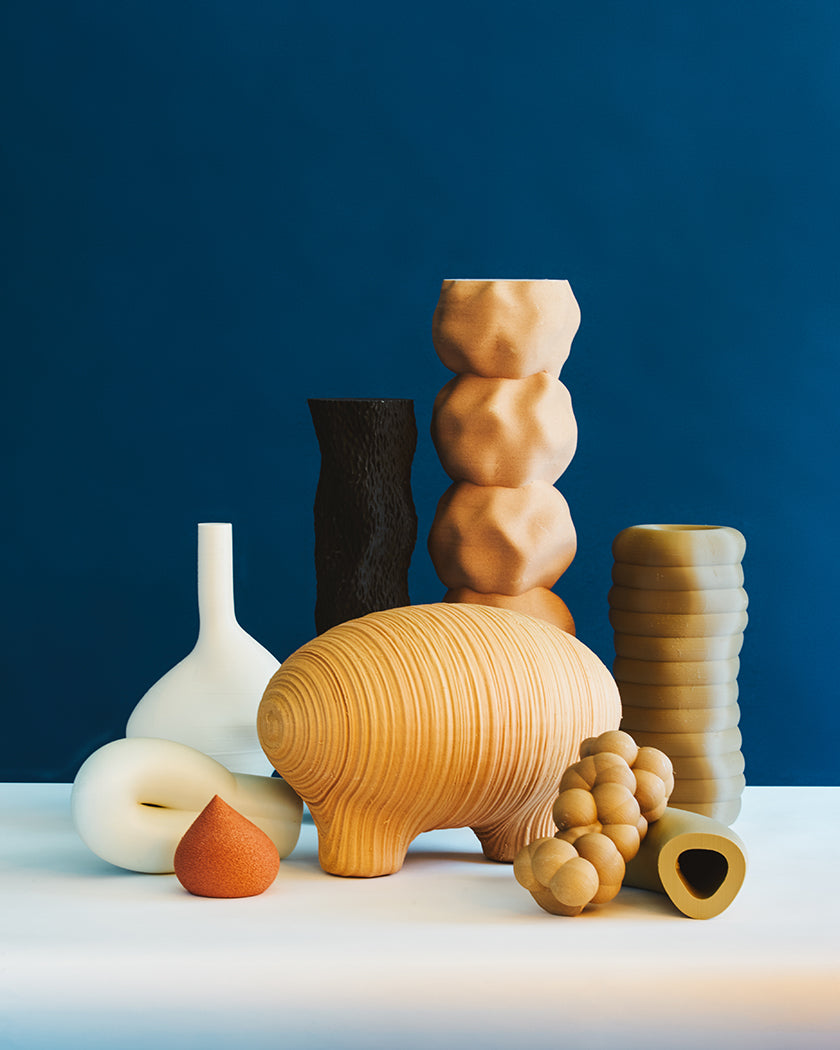
'Common Odd Things III,' a collaboration which features photography by Mishael Phillip.
Previously you said that ‘you dared to choose art and design’ as a career path. Why was that such a bold and daring decision? Have or when did your family come around to the discussion?
Well, when my parents came to Sweden they wanted their kids to have better opportunities and chances than what they had, and also take the opportunities that Sweden offers (free education, etc). When I chose an Art and Design, both at primary school and then during university, they were not happy about it at first because it is considered “risky.” But the last couple of years they have seen how hard I work and they’ve been super proud.
We want to throw out pre-existing conventions regarding the digital, emphasizing the emotional and tactile side of materials, objects, and textures to give digital a more human, relatable quality
From being a couple to business partners, how does the relationship work on a business level?
It works great for us. We love doing what we do and invest a lot of ourselves into it, so it is nice to share and build it together as partners in life and business.
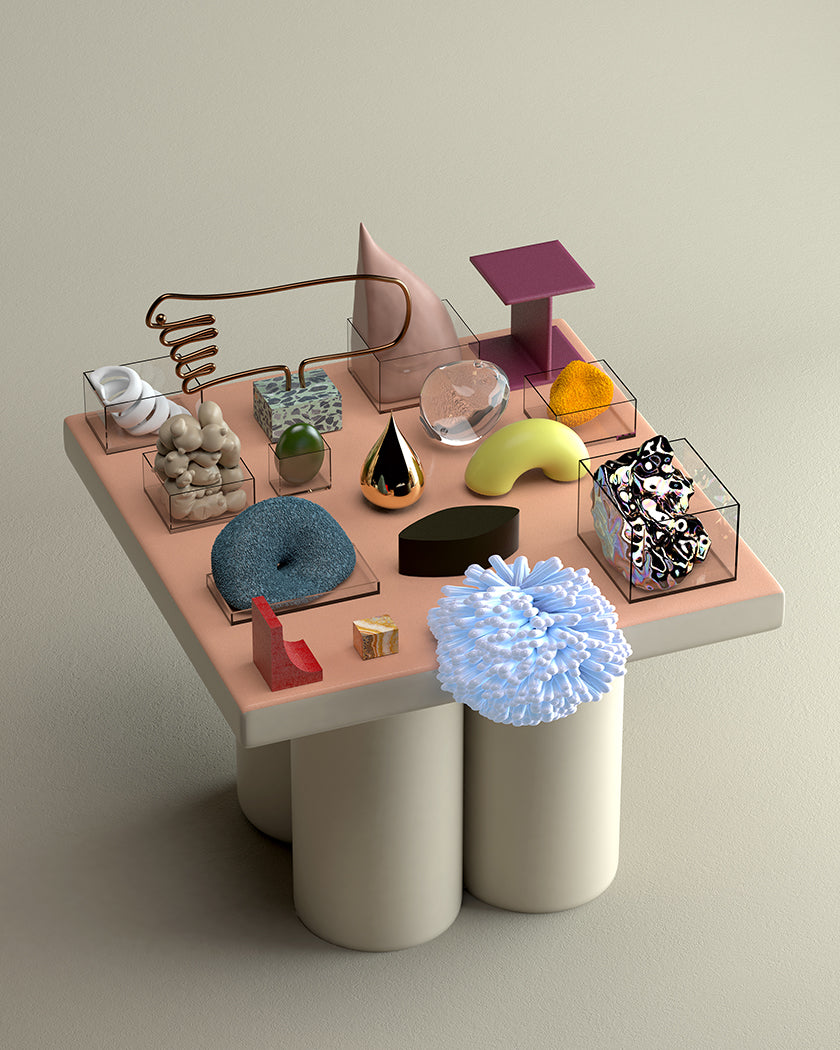
A curated and indexed collection of the wobbly and of the geometrical. 'Table of Contents' is a mixed plate of things that feel familiar and things you have never seen in this world.
How did you both start working together, is there a story behind this?
There is a story but perhaps not the most exciting one. Early in the relationship we started to naturally help each other with our projects in school, discussed a lot and bounced ideas together. So it kind of floated in naturally.
How would you explain Wang & Söderström and your aesthetic to others?
We are a multidisciplinary duo that has one foot in the digital realm and one in the physical. Our work stretches across animation, illustrations to set design, and objects where we try to bridge the physical and digital divide. We want to throw out pre-existing conventions regarding 'digital,' emphasizing the emotional and tactile side of materials, objects, and textures to give digital a more human, relatable quality and create more meaningful connections. We strive to create mind tickling experiences and challenges for our perception, which derives from our fond of working with materials and technology. A hybrid not only for aesthetic reasons but to stretch and explore our senses further.
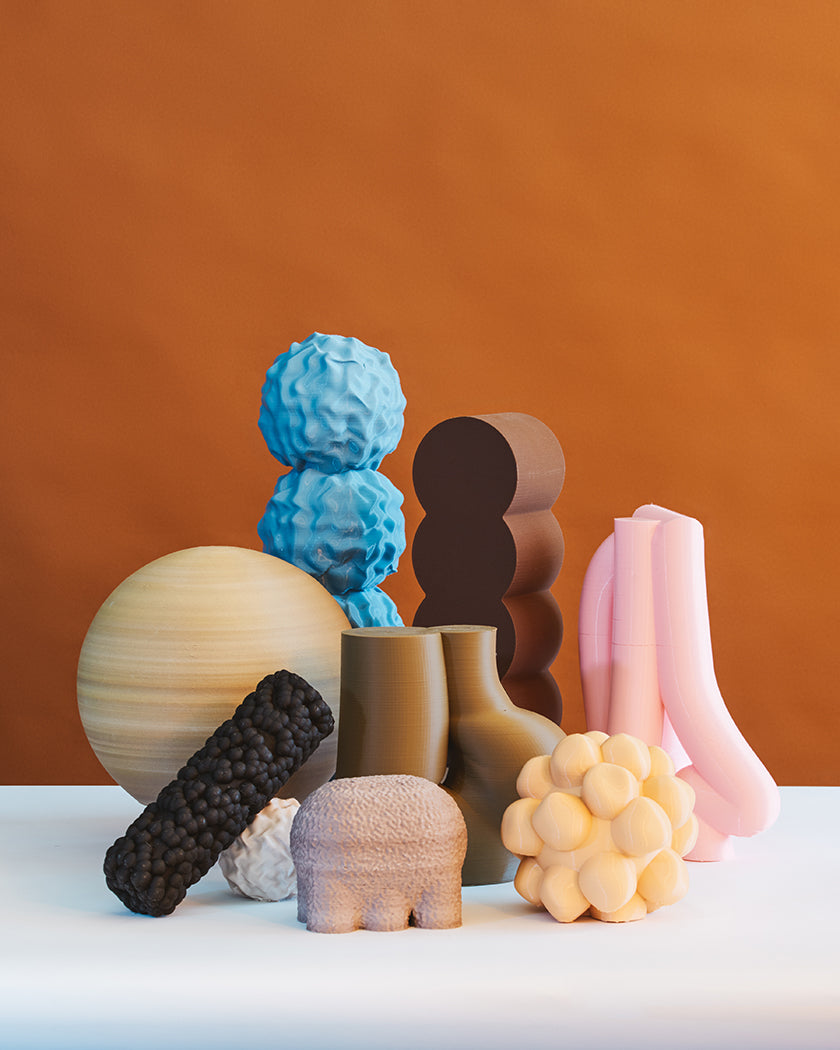
'Common Odd Things' is a still life series that aim to stretch the boundaries between the familiar and the unreal. The organic sculptures are created by artist duo Wang & Söderström through digital data to physical form by 3D printing.
Gothenburg is small but has a creative scene that punches above its size, how has the city left a mark on you both?
I (Anny) lived there for four years and Tim only one. The city is nice and felt very homey but we guess it was the people (classmates and colleagues), memories that left a mark on us rather than the city itself. But that is what defines a city, isn’t it? The people in it and the environment. We look forward to spending a couple of weeks there soon (in June) for the installation of an upcoming project.
Living and working between Copenhagen and Malmö...
We are actually mostly based in Copenhagen (living and working) but we have a satellite office in Malmö where we sometimes are based for local projects. Anny has family in Malmö as well so it is kind of our second home.

Wang & Söderström by Mishael Phillip.
Tim is also an architect, an addition becoming fairly common in design studios. Does this influence your approach to work and designing, if so, how?
Yes, of course. We believe everything you learn and experience influences your creative work, the perspective and views on things change and form your unique style and approach. More hands-on we always have space, lighting, scale, composition, and materiality with us in projects, even when we’re creating purely digital work.
Recreating that feeling you get when you think you know what is going to happen because you have seen it so many times before but suddenly something behaves in a whole different way and alerts your brain
Creating unexpected experiences is how your work is described. What reaction do you hope people think when looking at your work for the first time?
Short answer: “What is this? I like it.”
Long answer: We wish the viewers are able to imagine the tactile sensation from knowing the real-life experience. What we are interested in is finding ways to capture the familiar but adding the weirdness. We try to cast the viewer out their everyday loop by working with unexpected experiences in a glitch where the physical and digital world meet.
It’s in this borderline we love to explore. Creating something with references from the real world, like wind or a squeeze, combined with surreal materials and warped physical rules ripple your brain in a certain way. Recreating that feeling you get when you think you know what is going to happen because you have seen it so many times before but suddenly something behaves in a whole different way and alerts your brain. What the hell is going on?
Can you talk us through your workflow, starting from the brief to the making to handing over the deliverables?
Since we do very different kind of projects the workflow looks different depending on the project. But in general: In the early stage, we usually start almost directly in 3D software. We sketch there and try things out. Then it kind of evolves depending on the project but there is almost always a new thing to learn for each project, the technology is moving fast or the fact that 3D software is offering endless possibilities makes us constantly explore new things so we often have a trial and error phase until we are happy with the result.
We want to play with the viewers past experiences with certain sensory properties. Because a person’s memory influences how his or her mind relates to seeing these properties again in the future
Your style often has many realistic attributes to your digital designs, often having an inviting feeling which you can physically touch. Is this important for your artistic vision?
As humans, we are inherently sensory. As society progresses into the future, the impact of technology on different aspects of our lives will continue to increase. We want to show that technology can be something else. We believe all creatives are able to influence future technology and decide how we want to experience technology in our lives.
There is a phenomenon called 'Synesthesia' which is an involuntary happening that collects sensory information from one sense and transfers it to another. It is an on-going and open question for us if synesthesia can also be revoked. And we are exploring ways to evoke other senses like taste and touch by visually working with materials in a new way.
We want to play with the viewers past experiences with certain sensory properties. Because a person’s memory influences how his or her mind relates to seeing these properties again in the future. Synaesthesia unites previous sensory information into one coherent representation of an experience without the need for an actual sensation. Could you hear what this would sound like by seeing the work, could you feel the sensation of touch by looking at this material? Synesthesia has the power to alter perception and that is something we believe can be applied in many fields, especially when experiencing technology.
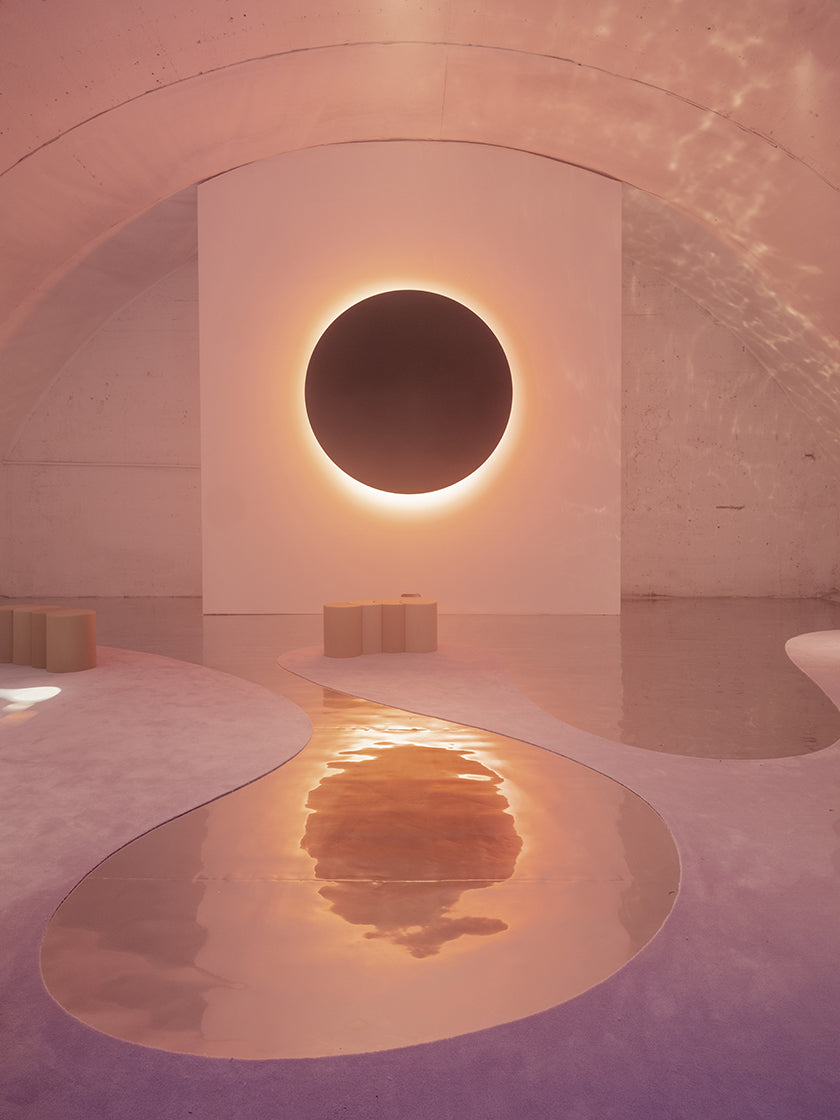
'Tides' by Kwangho Lee x Wang & Söderström for Noroo, shown at Milan Design Week.
Furniture designers, visual artist, architect, spatial designer, and the list goes on. Is there anything else you both do on the side?
Tim runs a music record label and creates music on the side. But yes, otherwise most of our time also goes into running the studio... When not, we are with friends and family.
Future projects or anything else you feels comfortable revealing?
We are currently working on finalizing an exhibition design and graphic identity for an exhibition called ‘Ocean Plastics’ for Röhsska Museum in Gothenburg, Sweden. It opens on the 15 June. It is the first time we’ve done a full exhibition design (which is not our own exhibition), and we can’t wait to show you the final result!

